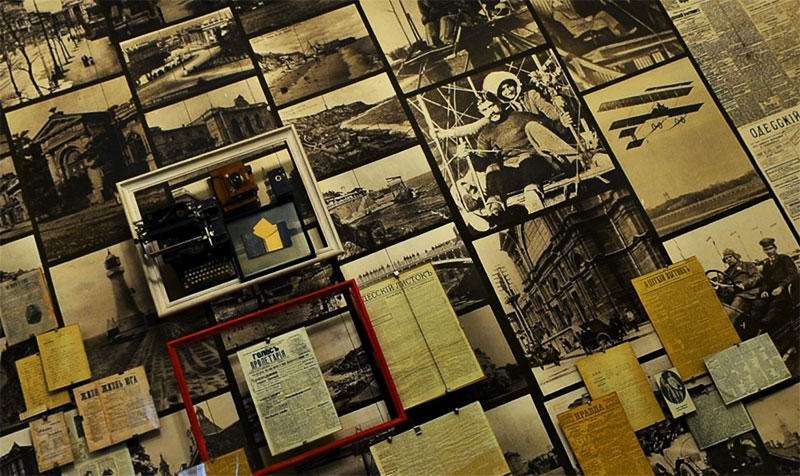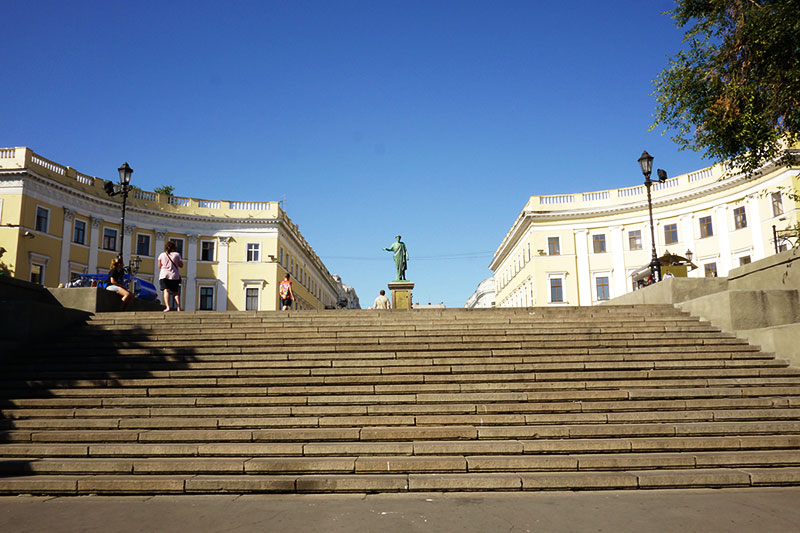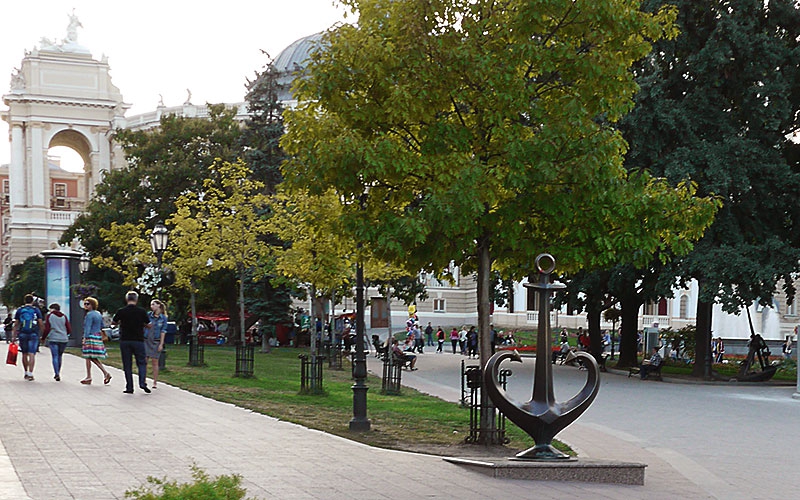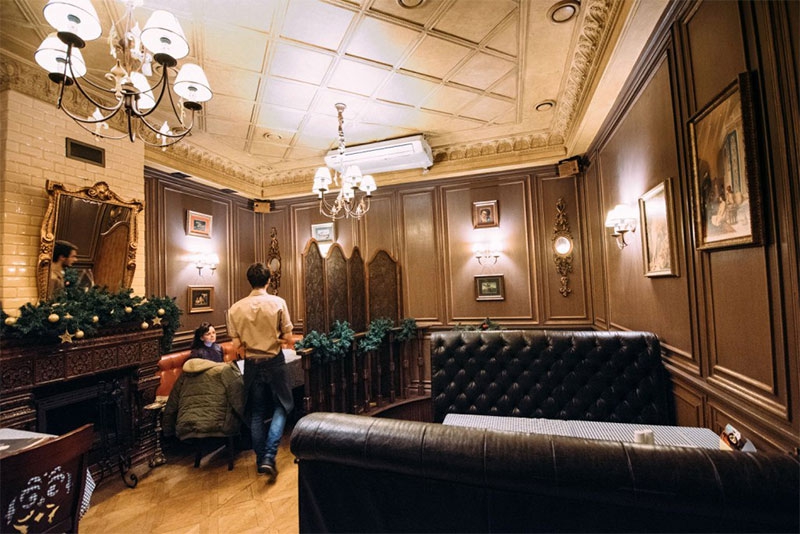Odesa is a city that gives extraordinary emotions, immersing in a special atmosphere of romance, love, and passion – all-consuming feelings that have conquered the hearts of many beautiful ladies and their lovers. She is distinguished by extraordinary humor, and satire, which is in the blood of Odesa citizens. It was this aura that helped great personalities, Pushkin, Gogol, Tolstoy, Chekhov, Bunin, Kuprin, Babel, Akhmatova, and many others to create their bestsellers in or about Odesa. Their names were subsequently immortalized by the names of streets and squares.
Writers, through their creativity, open up to the reader the mystical and mysterious world of South Palmyra and tell about its features. Their works have become a reflection of the more than 200-year history of the city, its bright moments, and the formation of traditions and customs. Learn about the life and work of writers, you can touch a part of the cultural world heritage by visiting the Literary Odesa tour. Making a tour of history through time and space, you will walk through the most memorable places of writers, and the guides will tell about the important events of their lives connected with Odesa.
Alexander Sergeevich Pushkin in Odesa
 Thirteen months of the poet’s exile in Odesa were not in vain – inspired by local comfort, the writer created the whole poem “Gypsies”, finished work on the “Bakhchisarai Fountain” and began working on the novel “Eugene Onegin” in which an entire chapter was devoted to the city, giving him fame for centuries. Guides with burning eyes will show the house in which the genius worked – today it is a museum located on Pushkinskaya Street 13. Visitors will get acquainted with photocopies of A.S. Pushkin’s manuscripts written during his stay in Odesa. And the courtyard opposite will amaze with its artistic painting, which symbolizes the city, as the only link at that time with Europe. The monument to A.S. Pushkin (on Primorsky Boulevard), which is the most reliable copy, repeating all the features of his face, is installed in the city.
Thirteen months of the poet’s exile in Odesa were not in vain – inspired by local comfort, the writer created the whole poem “Gypsies”, finished work on the “Bakhchisarai Fountain” and began working on the novel “Eugene Onegin” in which an entire chapter was devoted to the city, giving him fame for centuries. Guides with burning eyes will show the house in which the genius worked – today it is a museum located on Pushkinskaya Street 13. Visitors will get acquainted with photocopies of A.S. Pushkin’s manuscripts written during his stay in Odesa. And the courtyard opposite will amaze with its artistic painting, which symbolizes the city, as the only link at that time with Europe. The monument to A.S. Pushkin (on Primorsky Boulevard), which is the most reliable copy, repeating all the features of his face, is installed in the city.
Anna Andreevna Akhmatova in Odesa
 Anna Akhmatova is a poetess, fully associated with the literary Odesa. She was born on June 23 1889 at the 11th station of the Big Fountain in a small hut, which, unfortunately, was like the winter house on the corner of Ul. Kuznechnoy / Spiridonovskoy, not preserved.
Anna Akhmatova is a poetess, fully associated with the literary Odesa. She was born on June 23 1889 at the 11th station of the Big Fountain in a small hut, which, unfortunately, was like the winter house on the corner of Ul. Kuznechnoy / Spiridonovskoy, not preserved.
The formation of Anna as a poetess affected her entire youth and was associated with vivid episodes of her life – being in love, meeting in Tsarskoe Selo with Nikolai Gumilyov, and their wedding (1910) after seven years of their acquaintance. However, she was lucky to be in Odesa three more times – she came and stayed in the country house with her aunt. Once, telling the mother that a memorial plaque would hang at the place of her birth, she guessed it – today a stone bas-relief adorns the granite wall. Having left Odesa, the poetess faced a series of tragic events in her life.
Nikolai Vasilyevich Gogol
The poet pleased Odesa with his presence twice, in 1848 and 1850. The first visit was random – returning by sea from a trip, he was forced to stay in Odesa because of quarantine (cholera raged). He lived at that time with Countess Tolstoy on the street. Barracks, 12.
The second time in the winter of 1850-1851, he arrived purposefully — he liked not only the climate, he was charged with the energy of the city, and he inhaled its aromas. He lived in the house of his uncle on Kazarmennaya Street, later on Nadezhdinskaya Street 11 (today Gogol). You can find the house on the established memorial tablet During this period, the writer worked on the second part of the work “Dead Souls”, in the house of his brother Prince Repnin, where he had his room and there no one dared to disturb him. Subsequently, all the works on the work were burned. Upon learning of Gogol’s arrival, the Odesa Theater staged the Inspector and the Lackeisk all winter.
Evgeny Petrovich Kataev and Ilya Ilf
The writers who presented the world with the Twelve Chairs and the Golden Calf are closely intertwined with South Palmyra. Ilya Ilf was born in Odesa in 1897, was engaged in labor activity, and he appeared as a professional writer in 1923. Two years later, he meets Yevgeny Petrov (Kataev) – a disciple of Bunin, who will describe his life in the “Grass of Oblivion”. There is a close creative friendship between the writers, which has revealed the most famous novel to the world.
Their satirical stories were presented to readers of their favorite characters: Ostap Bender, Ella Lyudoedka, Shura, and Kisa Vorobyaninov. In Odesa, there is a monument – a bronze chair dedicated to the novel “The Twelve Chairs” and its main character – Ostap Bender, and in 2009, a monument to Bender and Vorobyanin was erected near the statue. Sculptures adorn the entrance to the restaurant in the City Garden, attracting customers. Until now, books with their stories are published and performances are staged.

Isaac Emmanuilovich Babel
 The playwright and writer of Jewish descent madly loved Odesa, the color of which he described in “Odesa Tales”. Thanks to the latter, the writer gave fame to criminal authority Misha Yaponchik – he became the prototype of the main character Benny Creek. Odesa was a favorite place of recreation and creativity of the writer, and he lived in a house on Zhukovsky Street (opposite the house on 17 Rishelievskaya Street). In Soviet times, a memorial plaque was installed on it. In the Primorsky district, tourists will be able to see the monument to the writer, reflecting it thoughtfully and looking into the distance.
The playwright and writer of Jewish descent madly loved Odesa, the color of which he described in “Odesa Tales”. Thanks to the latter, the writer gave fame to criminal authority Misha Yaponchik – he became the prototype of the main character Benny Creek. Odesa was a favorite place of recreation and creativity of the writer, and he lived in a house on Zhukovsky Street (opposite the house on 17 Rishelievskaya Street). In Soviet times, a memorial plaque was installed on it. In the Primorsky district, tourists will be able to see the monument to the writer, reflecting it thoughtfully and looking into the distance.
Ivan Alekseevich Bunin
Bunin could not live without Odesa, so he came to the city almost every year, where he met with his friends, especially Kuprin. At one of the social events, fate presented him with a meeting with his future wife, Anna Tsakni. Creative activity in Odesa was also successful – cooperation with the newspaper “South Review” allowed to please the reader with new articles and stories. Today one of the central streets of the city is named after him.
The historic center of the city …
Guided tours of the literary Odesa are stacked so that you constantly find yourself in significant places connected with the life of writers.
- The Literary Museum, which was founded in 1977, is today one of the largest literary museums in the world. The palace, which houses valuable works, photographs, magazines, and exhibits, that once belonged to the aristocrat DI Gagarin, impresses with its architecture – Ludwig Oton (architect) mixed several styles, giving the building an exceptional, eclectic style. Each room, all of them 20, tells the story of a certain period, and in the adjoining courtyard, tourists can get acquainted with unique sculptures dedicated to writers and their characters. Every year on April 1, the exhibition is replenished with new exhibits.
- The monument to the Odesa reader is a sculptural composition with ironic subtext, which was based on a monument to the founders of Odesa, which was dismantled by the Bolsheviks. In the center, Empress Catherine, with a Russian-Ukrainian phrasebook, Devolan (the author of the city’s general plan) reads the guidebook, Deribas, Potemkin, and Zubov – get acquainted with the works of M. Zhvanetsky, Babel, Ilf and Petrov.
Inhabitants of Odesa are known for their love of literature, therefore meeting the guests of the city, they want to fully convey it to them. The events on the Cathedral Square contribute to this – exhibitions, and concerts for guests and residents of the city are regularly held there. Every year, since 2014, inhabitants organize the Odesa Literary Festival, which takes place in late September.
Odesa is a mirror image of its cultural wealth, an invaluable contribution of writers, whose life was directly connected with the city, and the significant periods were described in verses and works. You can slowly walk through the literary Odesa, enjoy the sea, and feel the spirit of freedom. Do you want to plunge into this atmosphere? Only Odesa will give those bright moments about which the great poets and playwrights of the 19th century wrote.





